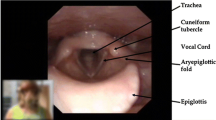Abstract
An acid-induced, cholinergic esophagobronchial reflex has been described whereby acid refluxing into the esophagus causes bronchospasm. Reports of exertional gastroesophageal acid reflux prompted us to study the possibility that exercise-induced asthma (EIA) could be related to gastroesophageal reflux (GER). Following an overnight fast, 10 athletes with a history of EIA (nine men, one woman; mean age 31) were studied. Continuous monitoring of intraesophageal pH and motility, ECG, and arterial oxygen saturation was done. After baseline monitoring at rest for 15 min, subjects underwent treadmill exercise for 10 min followed by continuous monitoring for 30 min after exercise. Spirometry was done at baseline prior to exercise, then repeated every 5 min after exercise for 30 min. Two subjects were retested at a later date following a standard test meal. All 10 subjects demonstrated a decrease in FEV1 in response to exercise, but only half met criteria for EIA. Although 60% (6/10) showed some evidence of GER, only three subjects demonstrated a pathologic degree of GER. In the two subjects retested postprandially, change in FEV1 was no different in one and improved in the other despite worsening of GER in both. There was no significant correlation between GER and EIA (P=0.2). EIA correlated inversely with amplitude of esophageal contractions (P=0.029) and was directly related to the percentage of multi-peaked contractions and the duration of peristaltic contractions (P=0.08). EIA is not associated with exertional GER.
Similar content being viewed by others
References
Boyle JT: Pathogenic gastroesophageal reflux in infants and children. Pract Gastroenterol 14:25–38, 1990
Barish CF, Wu WC, Castell DO: Respiratory complications of gastroesophageal reflux. Arch Intern Med 145:1882–1888, 1985
Wright RA, Miller SA, Corsello BF: Acid-induced esophagobronchial-cardiac reflexes in humans. Gastroenterology 99:71–73, 1990
Sontag S, O'Connell S, Greenlee H, Schnell T, Chintam R, Nemchausky B, Chejfec G, Van Drunen M, Wanner J: Is gastroesophageal reflux a factor in some asthmatics? Am J Gastroenterol 82:119–126, 1987
Mahler DA: Exercise-induced asthma. Med Sci Sports Exerc 25:554–561, 1993
Hendrickson CD, Lynch JM, Gleeson K: Exercise induced asthma: A clinical perspective. Lung 172:1–14, 1993
Spector SL: Update on exercise-induced asthma. Ann Allergy 71:571–577, 1993
Kraus BB, Sinclair JW, Castell DO: Gastroesophageal reflux in humans. Ann Intern Med 112:429–433, 1990
McFadden ER Jr: Hypothesis: Exercise-induced asthma as a vascular phenomenon. Lancet 335:880–883, 1990
Richter JE, Bradley LA, Castell DO: Esophageal chest pain: Current controversies in pathogenesis, diagnosis, and therapy. Ann Intern Med 110:66–78, 1989
Clark CS, Kraus BB, Sinclair J, Castell DO: Gastroesophageal reflux induced by exercise in healthy volunteers. JAMA 261:3599–3601, 1989
Schofield PM, Bennett DH, Whorwell PJ, Brooks NH, Bray CL, Ward G, Jones PR: Exertional gastro-oesophageal reflux: A mechanism for symptoms in patients with angina pectoris and normal coronary angiograms. Br Med J 294:1459–1461, 1987
Osler W: The Principles and Practice of Medicine. New York, D Appleton and Company, 1892
Mansfield LE, Stein MR: GE reflux and asthma: A possible reflex mechanism. Ann Allergy 41:224–226, 1978
Mays EE, Dubois JJ: Pulmonary fibrosis associated with tracheobronchial aspiration. Chest 69:512–515, 1976
Berquest WE, Rachelefsky GS, Kadden M, Siegel SC, Katz RM, Mickey MR: Effect of theophylline on gastroesophageal reflux in normal adults. J Allergy Clin Immunol 67:407–411, 1981
DeMeester TR, O'Sullivan GC, Bermudez G, Midell AI, Cimochowski GE, O'Drobinak J: Esophageal function in patients with angina-type chest pain and normal coronary artery angiograms. Ann Surg 196:488–498, 1982
Lehman GA, Faris JV: Observations for gastroesophageal reflux occurring during treadmill exercise testing. Gastroenterology 74:1054, 1978
Spaulding HS, Mansfield LE, Stein MR, Sellner JC, Gremillon DE: Further investigation of the association between gastroesophageal reflux and bronchoconstriction. J Allergy Clin Immunol 69:516–521, 1982
Herve P, Denjean A, Jian R, Simonneau G, Durox P: Intraesophageal perfusion of acid increases the bronchomotor response to methacholine and to isocapneic hyperventilation in asthmatic subjects. Am Rev Respir Dis 134:986–989, 1986
Mansfield LE, Hameister HH, Spaulding HS, Smith NJ, Glab N: The role of the vagus nerve in airway narrowings caused by intraesophageal hydrochloric acid provocation and esophageal distention. Ann Allergy 47:431–434, 1981
Stephens NL, Jiang H, Halayko A. Anat Rec 236:152–163, 1993
Marino AJ Jr: Tracking the source of atypical chest pain. Contemp Gastroenterol May/Jun:57–66, 1990
Cannon RO, Cattau EL, Yakshe PN, Maher K, Schenke WH, Benjamin SB, Epstein SE: Coronary flow reserve, esophageal motility, and chest pain in patients with angiographically normal coronary arteries. Am J Med 88:217–222, 1990
Ducrotte J, Berland D, Galmiche JP, Cribier A, Letac B, Pasquis P: Coronary sinus lactate estimation and esophageal motor anomalies in angina with normal coronary angiogram. Dig Dis Sci 29:305–310, 1984
Cattau EL Jr, Hirszel R, Benjamin SB, Cannon RO: Esophageal motility disorders in patients with abnormalities of coronary flow reserve and atypical chest pain. Gastroenterology 92:1339A, 1987
Stein H, DeMeester TR: Indications, technique, and clinical use of ambulatory 24-hour esophageal motility monitoring in a surgical practice. Ann Surg 217:128–137, 1993
Author information
Authors and Affiliations
Rights and permissions
About this article
Cite this article
Wright, R.A., Sagatelian, M.A., Simons, M.E. et al. Exercise-induced asthma. Digest Dis Sci 41, 921–925 (1996). https://doi.org/10.1007/BF02091531
Received:
Revised:
Accepted:
Issue Date:
DOI: https://doi.org/10.1007/BF02091531




